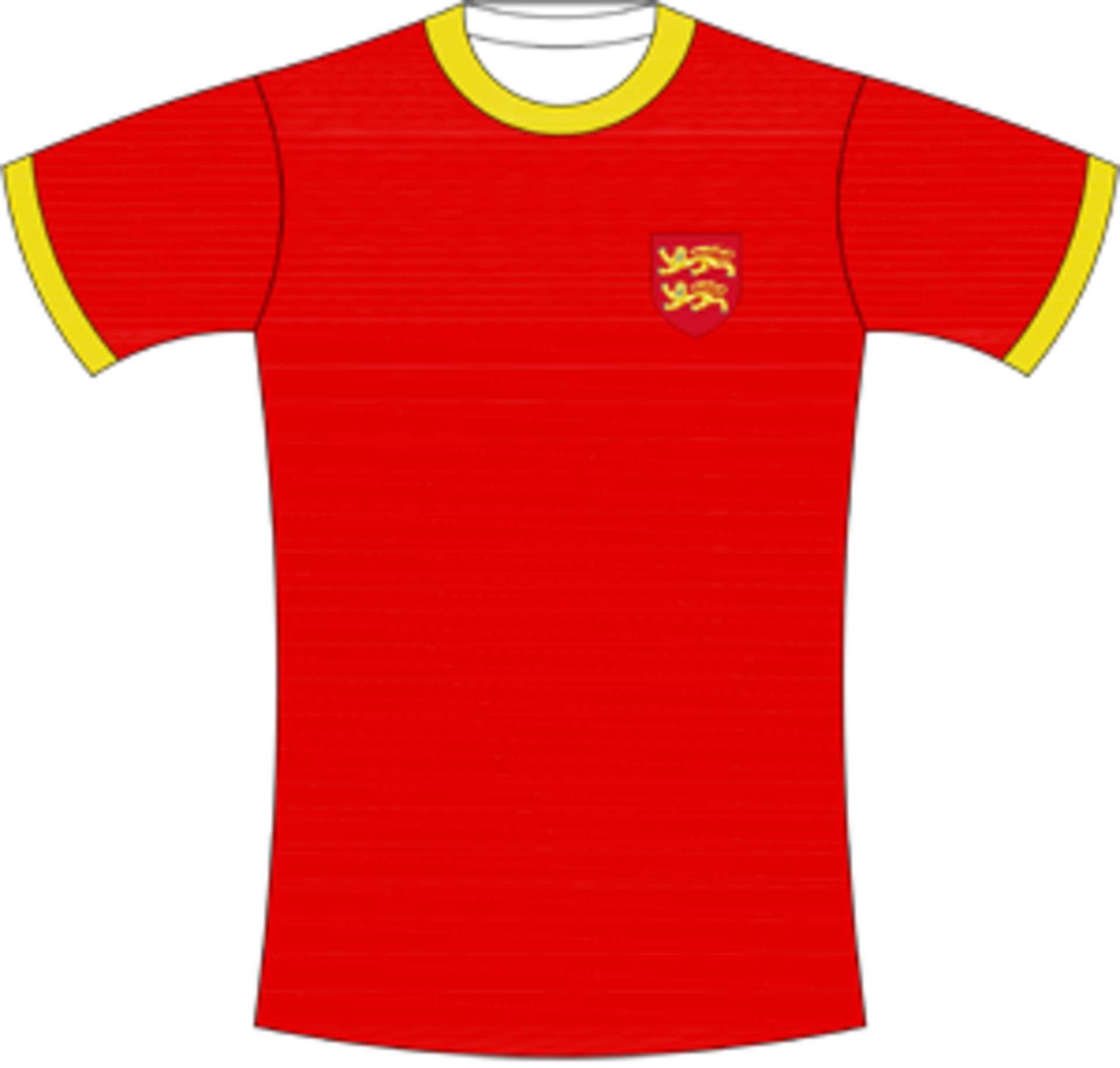Kingdom of England
When the Norman duke came victorious out of the conflict against two other pretenders (an English nobleman, and the king of Norway) for the throne of England in 1066 AD, he and his heirs ruled a kingdom where the process of unification, which had begun since the domination of Wessex at the beginning of the 10th century, had already finished.

Coat of arms

Shirt
| Position | First name | Last name | Mjesto rođenja | Like | Dislike | |
|---|---|---|---|---|---|---|
| GK | Jack | BUTLAND | Bristol |
7 |
2 |
|
| GK | Joe | HART | Shrewsbury |
14 |
6 |
|
| GK | Jordan | PICKFORD | Washington |
28 |
9 |
|
| DC | Ashley | WILLIAMS | Wolverhampton |
3 |
0 |
|
| DC | Chris | SMALLING | London |
6 |
9 |
|
| DC | Gary | CAHILL | Dronfield |
8 |
3 |
|
| DRC | Joe | GOMEZ | Catford |
2 |
0 |
|
| DRC | John | STONES | Barnsley |
19 |
1 |
|
| DR | Nathaniel | CLYNE | Stockwell |
3 |
1 |
|
| DR/MR | Kyle | WALKER | Sheffield |
17 |
3 |
|
| DL | Danny | ROSE | Doncaster |
10 |
4 |
|
| DL | Luke | SHAW | Kingston upon Thames |
13 |
3 |
|
| DL | Ryan | BERTRAND | Southwark |
3 |
2 |
|
| DRC/DMC | Eric | DIER | Cheltenham |
18 |
3 |
|
| DRC/DMC | Phil | JONES | Preston |
7 |
1 |
|
| DMC | Jordan | HENDERSON | Sunderland |
23 |
6 |
|
| MC | Jack | WILSHERE | Stevenage |
8 |
8 |
|
| MRLC/DL | James | MILNER | Leeds |
4 |
2 |
|
| AMC | Adam | LALLANA | St.Albans |
11 |
11 |
|
| AMC | Dele | ALLI | Milton Keynes |
22 |
8 |
|
| AMC | Ross | BARKLEY | Liverpool |
6 |
3 |
|
| AMRLC | Alex | OXLADE-CHAMBERLAIN | Portsmouth |
12 |
1 |
|
| AMRL | Jesse | LINGARD | Warrington |
7 |
1 |
|
| AMRL | Nathan | REDMOND | Birmingham |
5 |
0 |
|
| AMR/DR | Michail | ANTONIO | London |
5 |
3 |
|
| AMRL/FC | Theo | WALCOTT | Stanmore |
5 |
2 |
|
| SS/FRLC | Wayne | ROONEY | Liverpool |
21 |
5 |
|
| FRLC | Andre | GRAY | Wolverhampton |
2 |
0 |
|
| FRLC | Daniel | STURRIDGE | Birmingham |
15 |
4 |
|
| FRLC | Danny | WELBECK | Manchester |
6 |
2 |
|
| FRLC | Marcus | RASHFORD | Manchester |
19 |
3 |
|
| FC | Harry | KANE | Chingford |
20 |
4 |
|
| FC | Jamie | VARDY | Sheffield |
14 |
3 |
(Today part of: England)
Seen as how they had only taken the place of the old Anglo-Saxon aristocracy, without changing the inner workings of the state, the Norman conquest of the throne did not signify either an overturn, or a beginning of a radical new era. Normans had merely implemented the use of the French language in communication between rulers, in courts, and culture. Nevertheless, as early as the 12th century, Normans had assimilated themselves into the populace and the English identity had prevailed – the system of administration, organization of the Church, as well as myths about the founding of the state, and, in time, the English language as well. Conflict had been the dominant force in England since the second half of the 11th century; the Norman conquest of England, military campaigns against the Welsh and the Scotts, as well as the civil war between the Norman elites, especially within the ruling dynasty. It does not surprise, then, that military titles had played such a prominent role in the structure of the society.
However, the thing that had changed to a great extent by the arrival of the Normans was the introduction of England to the occurrences in continental Europe, seen as how English kings were still Norman dukes and, as such, vassals of the king of France. The Kingdom of France gained even more strength when the Norman duke Henry II (ruled 1154 – 1189), the originator of the Plantagenet dynasty, sat on the English throne. Aside from being the count of Anjou and Maine in the Kingdom of France, he had gained the vast duchy of Aquitaine through marriage, and with such holdings became the most powerful ruler in France, with more land than even the King of France, formally his suzerain.
Sources
- Jeremy BLACK, Povijest Britanskih otoka, Zagreb, 2004.
- Grupa autora, Povijest: Rani i razvijeni srednji vijek , knjiga VI., Zagreb 2008.
- Adrian HASTINGS, Gradnja nacionaliteta , Rijeka, 2003.
- Coat of Arms:https://en.wikipedia.org/wiki/Royal_Arms_of_England
